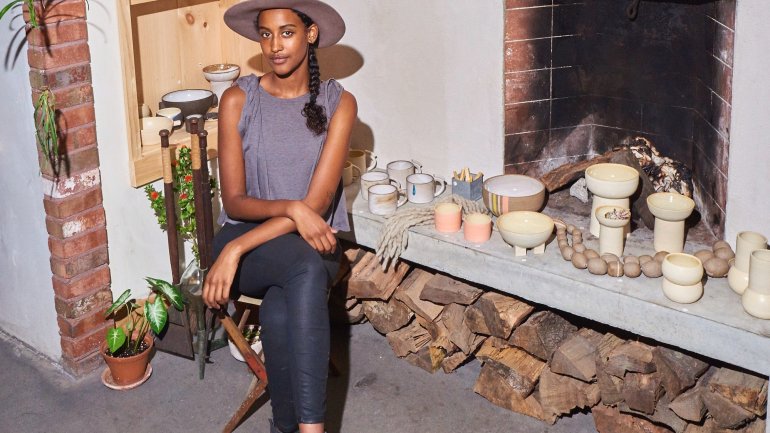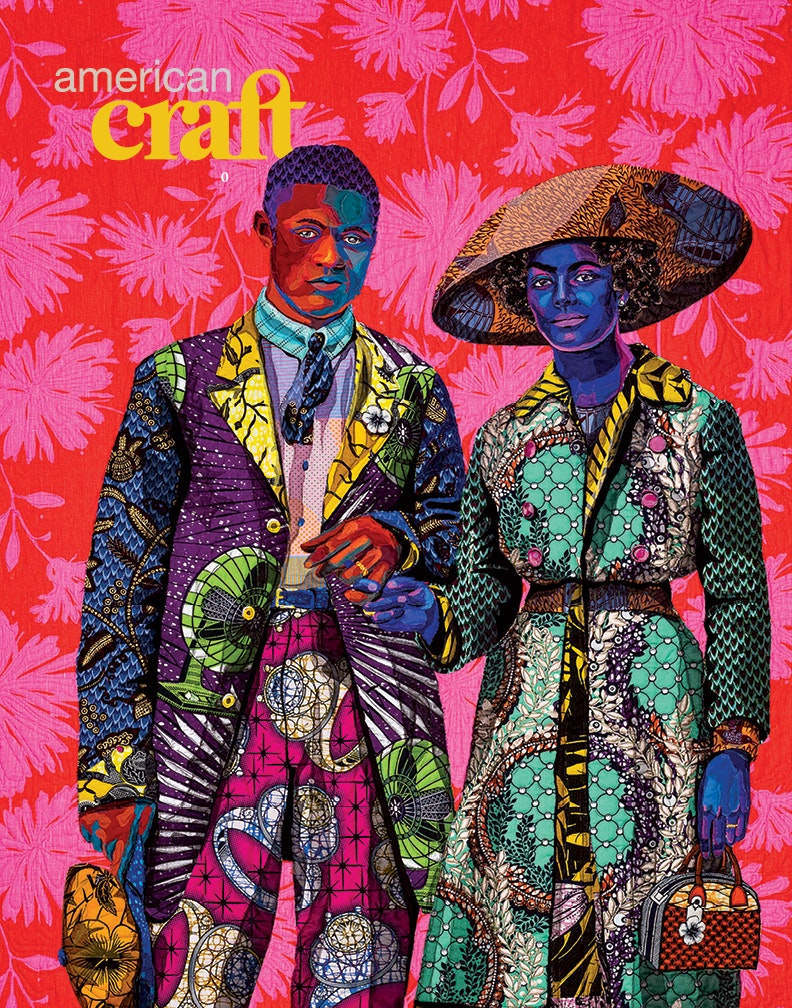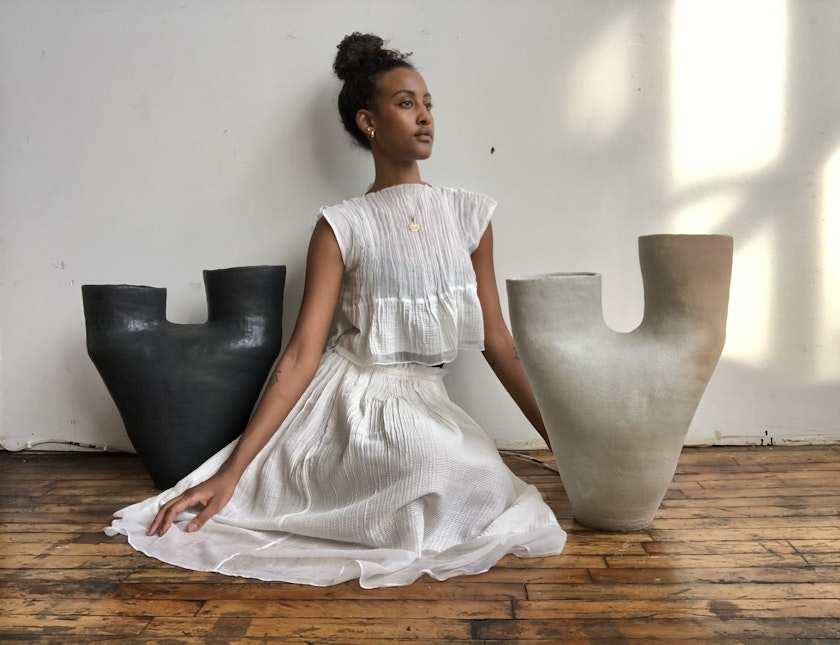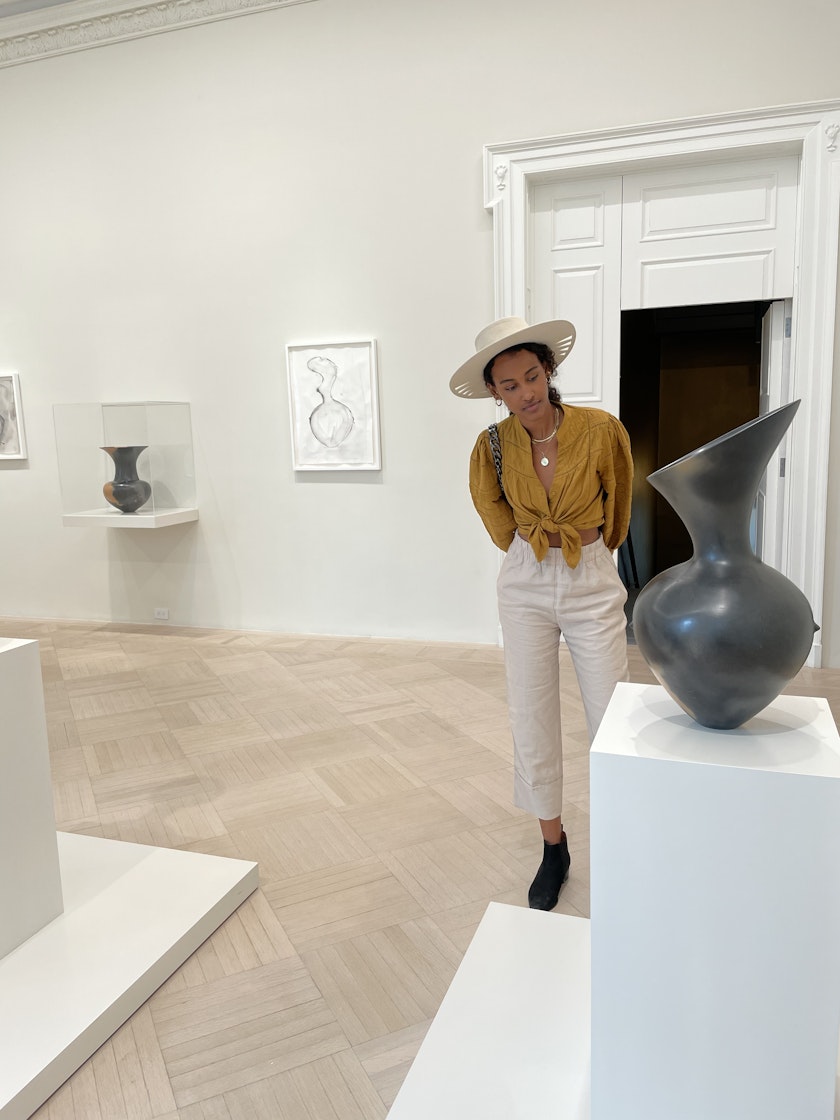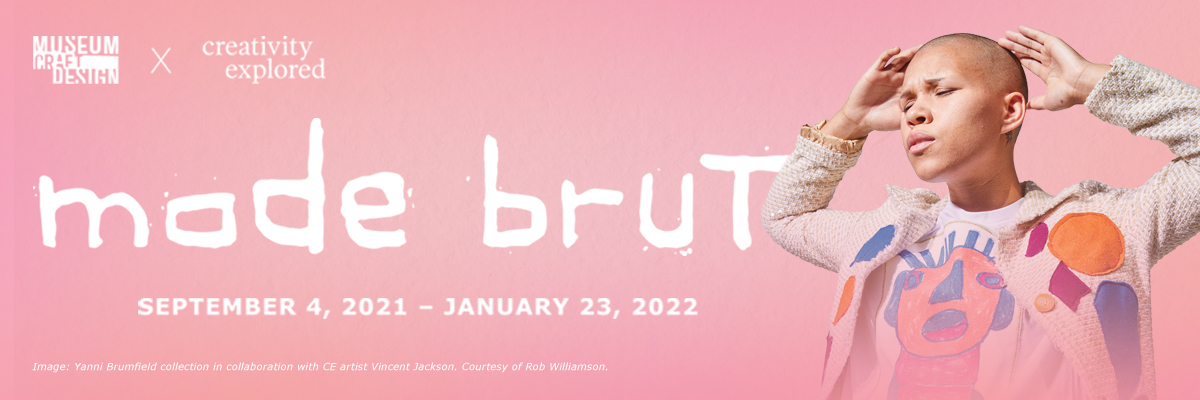The Queue: Dina Nur Satti
Get to know the people featured in the pages of our magazine as they share what's inspiring them right now.

A biweekly roundup for and by the craft community, The Queue introduces you to the artists, curators, organizers, and more featured in the current issue of American Craft. We invite these inspiring individuals to share personally about their lives and work as well as what's inspiring them right now.
Based in New York City, Dina Nur Satti is the artist behind Nur Ceramics and is the featured maker in the the Fall 2021 issue of American Craft. Claire Voon writes, "[Dina] is known for quietly exquisite pieces that nod to artistic, spiritual, and quotidian traditions of North and East Africa, where her family's roots lie. Her vessels, from vases to incense burners,
each have an origin story linking them to mores from
time immemorial, though they look at home in any
design-savvy 21st-century dwelling." Read the full piece here.
nurceramics.com | @nur_ceramics
How do you describe your work or practice?
My practice is a framework for self-knowing and personal and communal evolution. I think of it as a spiritual practice because it connects me to the ethereal world of creativity that is otherworldly and larger than myself. Being an artist to me truly feels like a divine experience. We work with subtle energies within our own selves and transform ideas in our minds into three dimensional expressions.
In my personal viewpoint, art doesn't exist and develop in a vacuum. Even if my audience can't see it from the outside, my relationships with other artists is a constant aspect of my journey. Being around other creatives who share your artistic worldview and exchanging ideas and experiences with them acts as a catalyst in your journey. It's an incredibly symbiotic relationship.
The past year has presented many challenges, from a global pandemic to renewed urgency around issues of racial equity and police brutality. As we slowly move into a post-pandemic world, how are you finding beauty and staying grounded?
I think this past year taught us to be comfortable with the uncomfortable. I think our society has in its DNA this conditioning to ignore what is uncomfortable, and we don't encourage its members to look at their individual and collective shadows. This past year I feel like we were all forced to sit with these shadows and no longer deny their existence.
As artists, we exist in that liminal space between shadow and light, since so much of artistic expression comes from the integration of dual concepts and feelings. I have been finding beauty by redefining what beauty is—and finding beauty and appreciation for the shadows and what is hard to acknowledge. I think the best way to stay grounded is by staying present with what is challenging instead of trying to avoid it.
The theme of the current issue of American Craft is "kinship." Can you reflect on that theme as it relates to your work and practice?
I think the theme of "kinship" captures so beautifully what we are being challenged to see at the moment. The imperialist mind functions through divisiveness, but in order for us to continue to survive on this Earth with rising climate change and a global pandemic amidst other crises, there is a need for our core belief systems to be changed and to recognize that all beings are kin and that one cannot thrive without the other.
It's also a time for us to recognize that our collective actions as a society have consequences, and what we are currently experiencing are a direct result of historically capitalist decisions stemming from these misaligned beliefs.
Being around other creatives who share your artistic worldview and exchanging ideas and experiences with them acts as a catalyst in your journey. It's an incredibly symbiotic relationship.
What has been the biggest barrier you've had to break through to get to the point you’re at with your career?
I would say my biggest challenge like any artists' was breaking through and becoming a full-time ceramic artist. I think Summer of 2020 was a big year for many BIPOC artists in the US, and I remember for many years before that feeling like there was this glass ceiling that was there, and it was only that year that I feel like that glass ceiling was recognized by the art and design community as a whole.
It was also this internal process where I had to find the strength to tell those stories behind my work and heritage confidently.
What research or writing are you doing, or seeing others do, that’s kinda cool, and why?
I'm currently doing research into the ritual use of objects in indigenous cultures around the world. I think what is really fascinating is finding similarities in cultures that are very different.
There is a great paper that sparked this research by Kym E. Young and Mary Pulford titled "Matriarchal Heritages in Women’s Pottery: An Examination of Similarities in West African and Native American Women’s Pottery Traditions."
If you could purchase any craft artist's work for your home or studio, whose would it be and why?
It would be a work by Magdalene Odundo. It's so rare as a woman from Africa to find role models and elders who so beautifully connect indigenous craft methods and the modern design world. Dame Odundo is such an inspiration to me, and I hope I have the honor to meet and learn from her one day.
Inspired by the people featured in The Queue?
Dive deeper into their work in the pages of American Craft magazine. Become a member of the American Craft Council to get a subscription and help fund a range of nonprofit programs that elevate the craft community.


